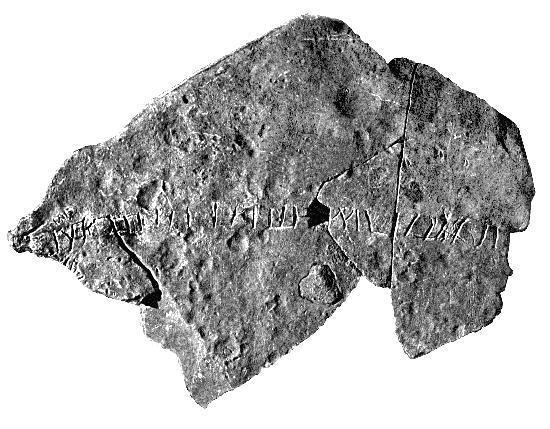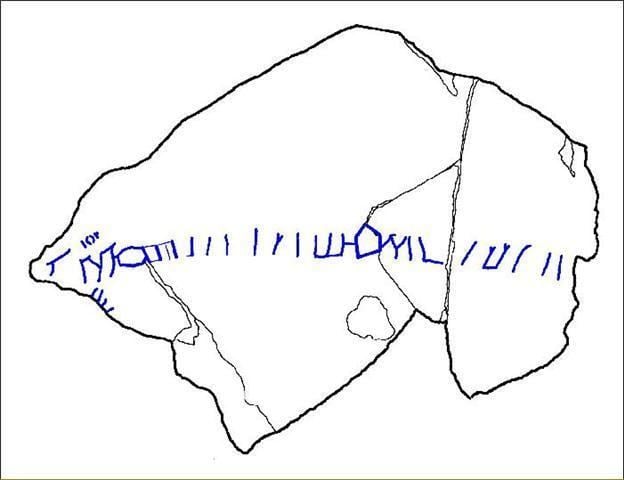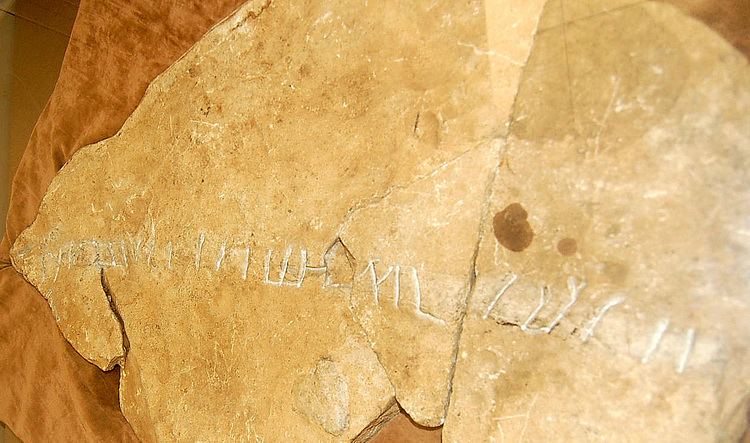 | ||
Brandenburg stone s southern cross
The Brandenburg stone is an inscribed stone slab found in Brandenburg, Kentucky, United States in 1912, on the farm of Craig Crecelius. The stone contains a strip of linear markings that resemble letters of a script. Crecelius exhibited the stone several times, but was unable to find anyone who could identify the markings.
Contents

Jon Whitfield, who acquired the stone in 1965, claims that they are Coelbren, a Welsh-language alphabet. Other writers have elaborated on these claims, arguing that this is evidence of pre-Columbian contact between the legendary Welsh prince Madoc and Native Americans. The consensus of Welsh scholars is that "Coelbren" is a fake script invented in the nineteenth century by Iolo Morganwg in his book Barddas.

History

In 1912, farmer Craig Crecelius found the stone artifact in field near the Ohio River in Brandenburg, Kentucky. The oolite stone measures 29 inches (74 cm) long by 15.5 inches (39 cm) wide and varies in thickness from 1 to 3 inches (2.5 to 7.6 cm). For more than 50 years, Crecelius displayed the stone at local fairs. At some point, the stone was shattered into three pieces.

In 1965, Crecelius abandoned his pursuit of the artifact's origin and transferred ownership to Jon Whitfield. Eight years later, archaeologists examined the stone and concluded that its markings were actually scratches resulting from a natural process. The stone was stored at the Brandenburg library until 1995 when it was moved to the Falls of the Ohio Interpretive Center in Clarksville, Indiana.

In 1999, the artifact was moved to the Falls of the Ohio State Park Interpretive Center for a year, and then to the Charlestown, Indiana public library. In January 2012 the artifact was returned to the Meade county library.
Claims of Welsh origin

Whitfield sought evidence that the markings were Welsh in origin. In 1998, the stone was examined by authors Baram Blackett and Alan Wilson, who asserted that the inscription was medieval Welsh. Blackett and Wilson have also claimed to have found the grave of King Arthur and the Ark of the Covenant. They translated the inscriptions into English from Coelbren, the script described by Iolo Morganwg, and which modern scholars believe to have been invented by him.
The stone's inscription was translated to read: "Toward strength (to promote unity), divide the land we are spread over, purely (or justly) between offspring in wisdom." This was interpreted to mean that it was a boundary marker. Jefferson Community College writer Lee Pennington has endorsed claims of the artifact's ancient Welsh origin. The claims have been widely circulated.
Authenticity
More recently, the artifact has been a subject of several books as well an episode of the H2 documentary America Unearthed. Author Jason Colavito has argued against the stone's authenticity, asserting that it was forged in the 19th or early 20th century when several books promoting "Coelbren" were widely circulated in America.
